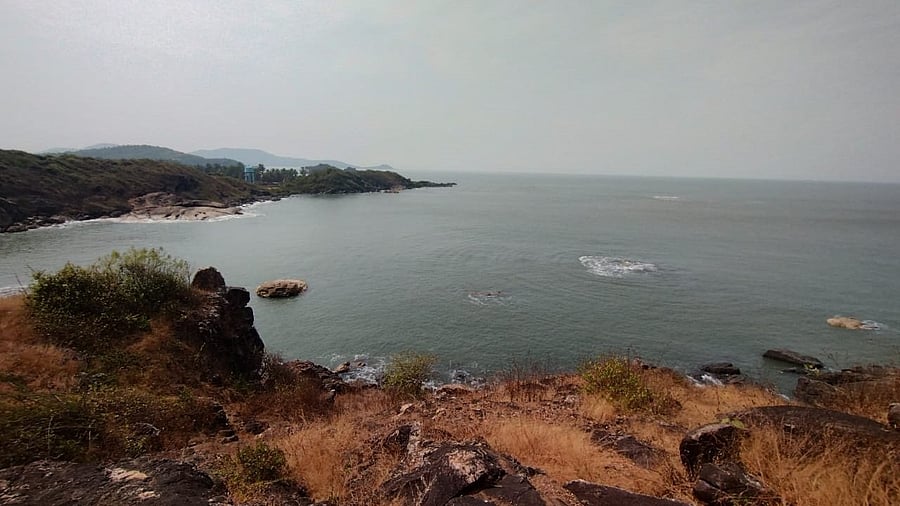
Credit: Special Arrangement
Rabindranath Tagore reached the shores of Karwar in 1882. The town, with its rich natural beauty and calm beaches, inspired the 22-year-old poet so much that he started penning his first drama Prakritir Pratisodh (The Revenge of Nature). The ‘Kashmir of Karnataka’, as the Nobel laureate describes the town in a dedicated chapter in his biography, Karwar has inspired several of his poems.
Karwar, and by extension, the entire Uttara Kannada district, is indeed a paradise for travellers. Except for snow-capped mountains and deserts, the district has everything that tourists look for while preparing a holiday itinerary. From the pristine coasts bordering the Arabian Sea to the thick evergreen forests of the Western Ghats, and from numerous waterfalls, including India’s second longest, Jog falls, to adventure sports, Uttara Kannada has it all.
While some say that the district has not utilised its potential for natural and religious tourism to its maximum capacity, there are also people who oppose unchecked touristic development that could take away from the essence and culture of the district. While both sides agree that the ‘hidden gems’ of Uttara Kannada should be explored and experienced, they want it to happen in a systematic and controlled manner so that nature remains unharmed.
The 142 km of Karwar’s coast is dotted with rocky and isolated beaches that are rich with diverse marine fauna. If luck is on your side, there is a high possibility of sighting whales, dolphins and several critically endangered marine species at the Apsarakonda-Mugali Marine Wildlife Sanctuary, the state’s first marine protected area.
This apart, the district has four major rivers — Kali, Gangavali, Aghanashini and Sharavati. These rivers not only form estuaries and backwaters but also create breathtaking waterfalls such as Jog falls, Magod falls, Vibhuti falls and Burude falls, to name a few.
The district is equally rich in culture and tradition. Apart from being one of the strongholds of Yakshagana, both the Malnad and coastal areas are rich in folk art forms of tribal communities. This includes the Siddis, Halakkis Vokkaligas, Kunbis, Gonds and Gavalis.
Adventure activities
Water sports are booming and growing in the district. The backwaters in Honnavar are one of the options. River rafting in the Kali river near Ganeshgudi and scuba diving at the Netrani islands off Murdeshwar also present experiences like no other.
For those seeking a ‘wildlife experience’, there could be no better place than the Kali Tiger Reserve near Dandeli, which is home to tigers, leopards (including the rare melanistic leopards), gaur, Asian elephants, sambar and more than 296 species of birds, including the iconic great Indian hornbill and Malabar trogon, among others. The semi-deciduous and evergreen forest patches, which cover nearly 70% of the district’s land mass, make this district one of the greenest in the state.
The Kavala caves, Syntheri rocks and Yana are some of the other natural beauties that are hard to miss.
Since time immemorial, the region has been considered a holy place due to the presence of several mythologically significant places like Gokarna, Murudeshwar, Idagunji, Sirsi Marikamba and Ulavi.
Reshma L, a software engineer from Bengaluru, says Uttara Kannada actually sums up Karnataka’s tourism tagline of ‘One state, many worlds’. “The district has so many tourism destinations that one can enjoy it along with family and friends. For solo riders like me, too, there are several adventure spots and trekking areas,” she says.
“In a district with limited employment opportunities, tourism can be a boon, especially for youth,” says Narayan Sail, a boat operator at the Honnavar backwaters. More than 1,500 youth from Kasarkod village are dependent on the 230 boats that venture into the ecologically fragile estuaries of the Sharavati river. They guide tourists to the ‘Kerala point’, ‘Lotus point’ and another view point.
A former tourism department officer in Uttara Kannada district says if the district opens up its tourism sector, it could generate employment opportunities for over 30,000 people. He believes one lakh indirect jobs could be created as well.
A scuba-diving operator at Murdeshwar says that there is a lot of red-tapism within the district administration that is deterring many companies and investors from coming to the district. “Murdeshwar happens to be the only place in Karnataka where scuba diving is available,” he points out.
“The administration is imposing so many restrictions and rules that operating the adventure sports becomes economically unviable,” the operator adds. However, Deputy Commissioner Lakshmi Priya emphasises that there cannot be a compromise on the safety of visitors and ecology in the name of promoting tourism.
Ecological considerations
Experts say employment generation should not be the only criteria for the administration before deciding on opening up the ecologically fragile district. “No one is opposed to tourism. However, what we should be looking at is sustainable ecotourism,” says environmentalist Ananth Hegde Ashisara. He gives the example of Gokarna, which has already witnessed over-exploitation by tourism.
“Before discussing Uttara Kannada being on par with Goa, we should ensure that there is a carrying capacity study conducted. The required infrastructure needs to then be put in place to allow only the scientifically permissible number of visitors,” he says.
The administration here is already facing the challenge of unregulated homestays, resorts and adventure sports operators. Dandeli and Joida are seeing many such unauthorised tourist activities.
Illegal resorts and homestays are causing more harm than benefit, says Keshava Korse, the director of the Sirsi-based Centre for Conservation Biology and Sustainable Development.
“At present, tourism is not really benefiting the majority of people in the district. Before opening up the district for large-scale tourism, we need to have comprehensive policy and a thorough study assessing ecological carrying capacity because if ecology fails, everything fails in this highly sensitive region,” he says.